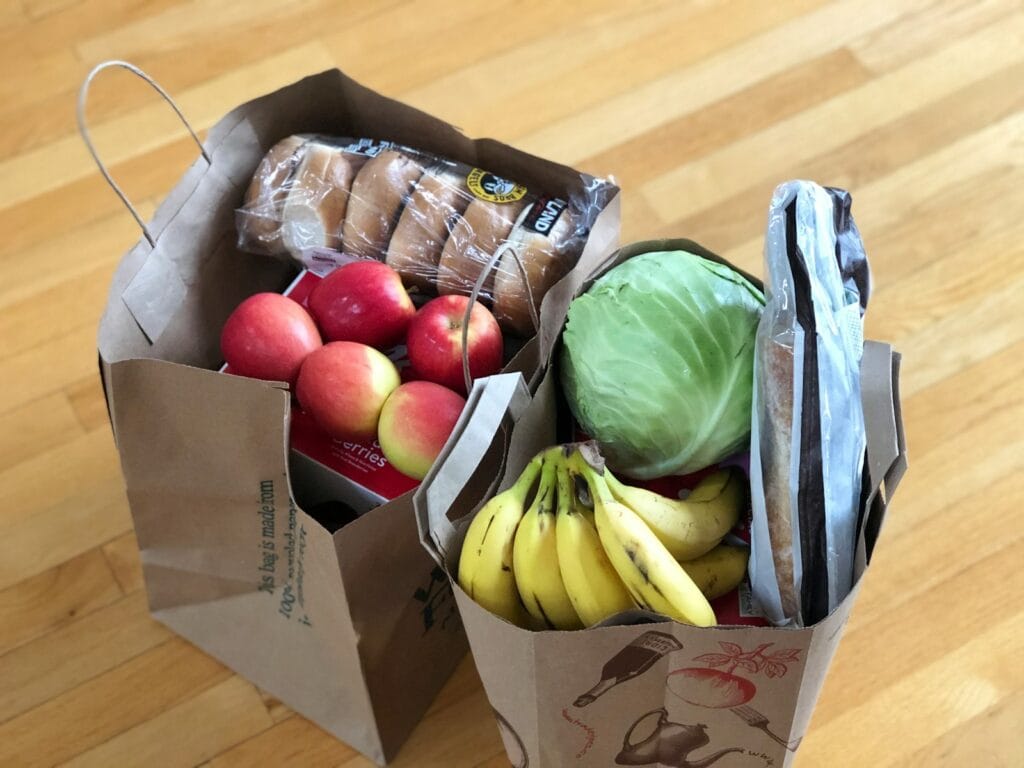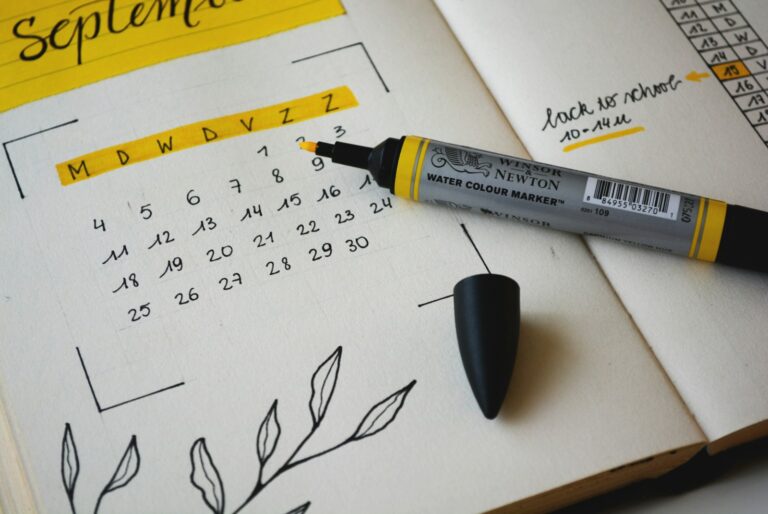Grocery shopping doesn’t have to be a dreaded task. With a solid system, you can turn the whole thing into a pretty manageable (maybe even pleasant?) part of your week. A good grocery list system saves time, cuts down on food waste, and helps you stick to your budget.
The first step? Plan your meals for the week. That way, you’re only buying what you’ll actually use. A lot of folks swear by shopping apps to make this easier. Apps like AnyList keep shared grocery lists simple, so everyone in the house can add stuff when you run low.
Sticking to the same routine each time you shop really helps. Whether you’re into scribbling on paper or tapping into your phone, the goal is the same: create a stress-free shopping experience that actually works for your life.
Key Takeaways
- A consistent grocery list system helps you avoid stress and saves money by steering clear of impulse buys and forgotten essentials.
- Digital tools can make shopping easier with features like voice input, shared lists, and automatic sorting.
- Planning meals before you make your list lets you shop faster and waste less food.
Building an Effective Grocery List System
A smart grocery list system saves time, helps you waste less, and keeps your spending in check. The trick is to match your approach to your habits, dietary needs, and even your favorite store’s layout.
Choosing the Right Grocery List Format
The right format makes shopping way less of a hassle. For some, paper lists are perfect—you can slap one on the fridge and jot things down as you go. Even a basic notepad or grocery list template can do the trick.
Digital lists bring more options. Grocery list apps let you:
- Share lists with your family
- Save favorite items for quick adds
- Sort by store section
- Check off items as you shop
Some people just use their phone’s notes app, while others like apps that tie in meal planning.
Try a couple methods and see what sticks. The best system is the one you’ll actually keep up with.
Customizing Lists for Dietary Needs
Your list should fit your household’s dietary needs. If you’ve got allergies, intolerances, or strong preferences, you’ll need a flexible system.
You could color-code items:
- Blue for gluten-free
- Red for vegetarian
- Green for low-sodium
Or split your list by diet type. That’s handy for avoiding mix-ups if different people have different needs.
Some apps let you tag items by diet or note favorite brands, so you don’t have to double-check labels every single time.
Keeping a master list of approved brands and products can save you a lot of time down the line.
Optimizing Lists for Shopping Efficiency
Organize your list to match the store’s layout to cut down on stress and speed things up. Group stuff by department or aisle instead of by meal.
A typical order might be:
- Produce
- Bakery
- Meat/Seafood
- Dairy
- Frozen
- Canned/Dry goods
Write down how much you need of each item so you don’t overbuy (or underbuy). If you’re budgeting, jot down price estimates too.
You can also prioritize your list by marking must-haves and “nice-to-haves.” That way, if you need to cut something, you know what can wait.
Before heading out, check your pantry and cross off anything you already have.
Improving Lists With Item Photos
Photos on your grocery list can help you find the right products—especially for specific brands or if someone else is shopping for you.
Most digital list apps let you add pictures. You could:
- Snap a photo of empty packaging before tossing it
- Photograph the brand you like
- Add produce pics so you know what you’re after
Photos are great if you’re shopping somewhere new or picking up specialty items. They cut down on confusion.
If you’re sticking with paper, just keep a quick photo album on your phone of your regular items. It’s a lifesaver for visual folks.
Digital Tools and Features for Stress-Free Shopping
Tech can make grocery shopping way less of a headache. Digital tools help you plan, shop, and remember everything you need.
Shopping List Apps and Their Key Features
Shopping list apps do more than just keep track of what you need. Apps like Listonic use AI to suggest items as you type, which is honestly a nice time-saver. Some apps sort your list by category, so you’re not running back and forth across the store.
Top features to look for:
- Save favorite items for quick adds
- Check off as you shop
- Make separate lists for different stores
- Track prices to help with budgeting
- Set reminders based on location
Some are super simple, while others pack in meal planning, barcode scanning, or even inventory tracking. Free options like List Ease handle the basics, while paid versions unlock more bells and whistles.
Using Voice Input and Recipe Web Import
Voice input makes adding to your list a breeze. Apps like Listonic let you speak items into your list, which is a lifesaver if your hands are messy from cooking.
Recipe web import is another handy feature. You can:
- Pull ingredients straight from online recipes
- Add them to your list with a tap
- Adjust amounts for serving sizes
Apps like Recify focus on blending meal planning and shopping, so you’re not jumping between apps.
You can also clip recipes while browsing and have the ingredients pop up in your list automatically—no more copying by hand.
Organizing Lists With Themes, Folders, and Sharing
Good organization makes your list easier to use. Many apps let you change themes or color-code items so you can scan your list at a glance.
Folders help split up shopping needs:
- Weekly groceries
- Special events
- Household supplies
- Different stores
The sharing feature is gold for families. Everyone can see updates in real time, so no more double-buying or missing essentials. Some apps even let you assign items to different people, which is great for splitting up the shopping.
Integrating AnyList and Platform Compatibility
AnyList is a favorite for its integrations. The free version is solid, but AnyList Complete adds even more features.
AnyList for Mac brings your lists to desktop, and everything syncs across:
- iPhones and iPads
- Android devices
- Mac computers
- Web browsers
No matter what device you’re using, you’ll have your digital shopping list handy. AnyList also works with Alexa and Siri, so you can add items with your voice.
It even syncs with your calendar for meal planning, and can ping you when you’re near a store with stuff on your list. Not bad for something that started as a simple list app.
Planning and Managing Grocery Shopping
Planning ahead saves you time and money at the store. It also takes the guesswork out of what to buy and cook all week.
Meal Planning and Recipe Collection
Start by planning your meals each week. Pick recipes that use some of the same ingredients to cut down on waste. Keep a folder or digital stash of go-to recipes.
Here’s a quick meal planning routine:
- Check your calendar to see how many meals you’ll need
- Look through your pantry first
- Choose meals with seasonal produce for better prices
- Mix up your proteins (chicken, beans, fish, whatever)
When you pick recipes, try to overlap ingredients. If you buy cilantro for tacos, maybe plan a curry later that week that uses the rest.
Meal planning apps can organize recipes and auto-generate your shopping list.
Budgeting and Price Comparison
Set a weekly or monthly grocery budget and keep an eye on your spending. It helps keep those impulse buys in check.
Some easy ways to save:
- Compare unit prices, not just package prices
- Buy store brands for basics
- Plan meals around sales
- Use cashback apps for extra savings
Keep a price book (on your phone or on paper) for regular items. You’ll spot real deals faster.
If you can, shop at a few stores to get the best prices on different things. Some people find produce is cheaper at one place, while pantry staples are better somewhere else.
Strategies To Reduce Food Waste
Americans toss about 30% of the food they buy. Cutting down on waste saves money and the planet.
Do a weekly fridge check before you shop. Use up what’s about to go bad and plan meals with those items.
Store food so it lasts longer:
- Herbs in water, like flowers
- Keep apples and bananas away from other produce
- Freeze bread, meat, and leftovers you won’t eat soon
Only buy what you’ll actually use before it spoils, especially fresh stuff.
Add to your list as you run out of things. Keep the list somewhere easy to find, like on the fridge or in a shared app everyone can update.
Frequently Asked Questions
Got questions? Here are some quick answers to common grocery list and shopping issues. A few tweaks can make your weekly trip so much easier.
What are the benefits of using a shared shopping list app for multiple users?
Shared shopping list apps let everyone add items in real time, so you don’t double up.
You can split up the shopping and assign tasks, so it’s clear who’s grabbing what.
A lot of apps let you add notes about brands or prices, so you’re all on the same page.
How can the 6-to-1 grocery method improve shopping efficiency?
The 6-to-1 method means planning six days of meals and leaving one day for leftovers or takeout.
It helps you waste less food since you’re only buying for planned meals.
You’ll save money by keeping your trips focused and organized.
What is the 3 3 3 rule for grocery shopping, and how does it work?
The 3 3 3 rule breaks your list into three categories: proteins, produce, and pantry staples.
You aim to spend about a third of your budget on each.
It’s a simple way to keep your meals balanced and your spending predictable.
How can I create a stress-free grocery shopping experience?
Plan your meals before you make your list so you don’t have to run back to the store.
Shop during less busy hours, like early mornings or late evenings.
Sort your list by store layout to avoid zigzagging all over the place.
What features should I look for in a free grocery list app to enhance my shopping process?
Look for apps that group items by section (produce, dairy, meat, etc.).
Make sure there’s a syncing feature so your list is always up-to-date across devices.
Price tracking is handy if you’re watching your spending or comparing stores.
How can I effectively organize my grocery list for easy navigation in the store?
Try grouping similar items together by where they’re found in the store—no one likes running back to produce after you’ve already passed it.
Be clear with your list: jot down quantities, brands, or sizes if you care about those details. Saves a lot of head-scratching later.
Before heading out, give your list a once-over and try to put things in the order you’ll find them as you walk through the aisles. Makes the whole trip smoother, honestly.




